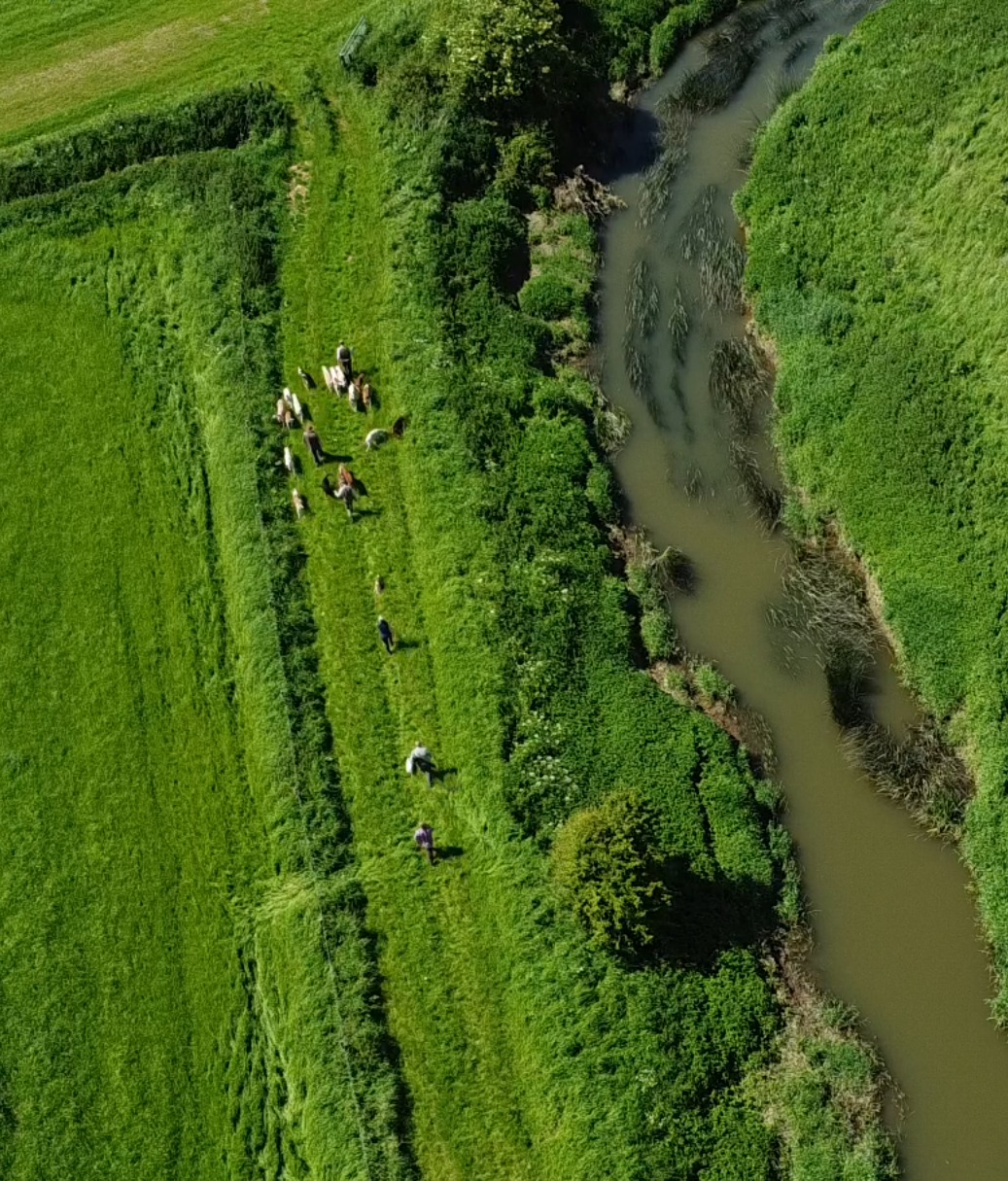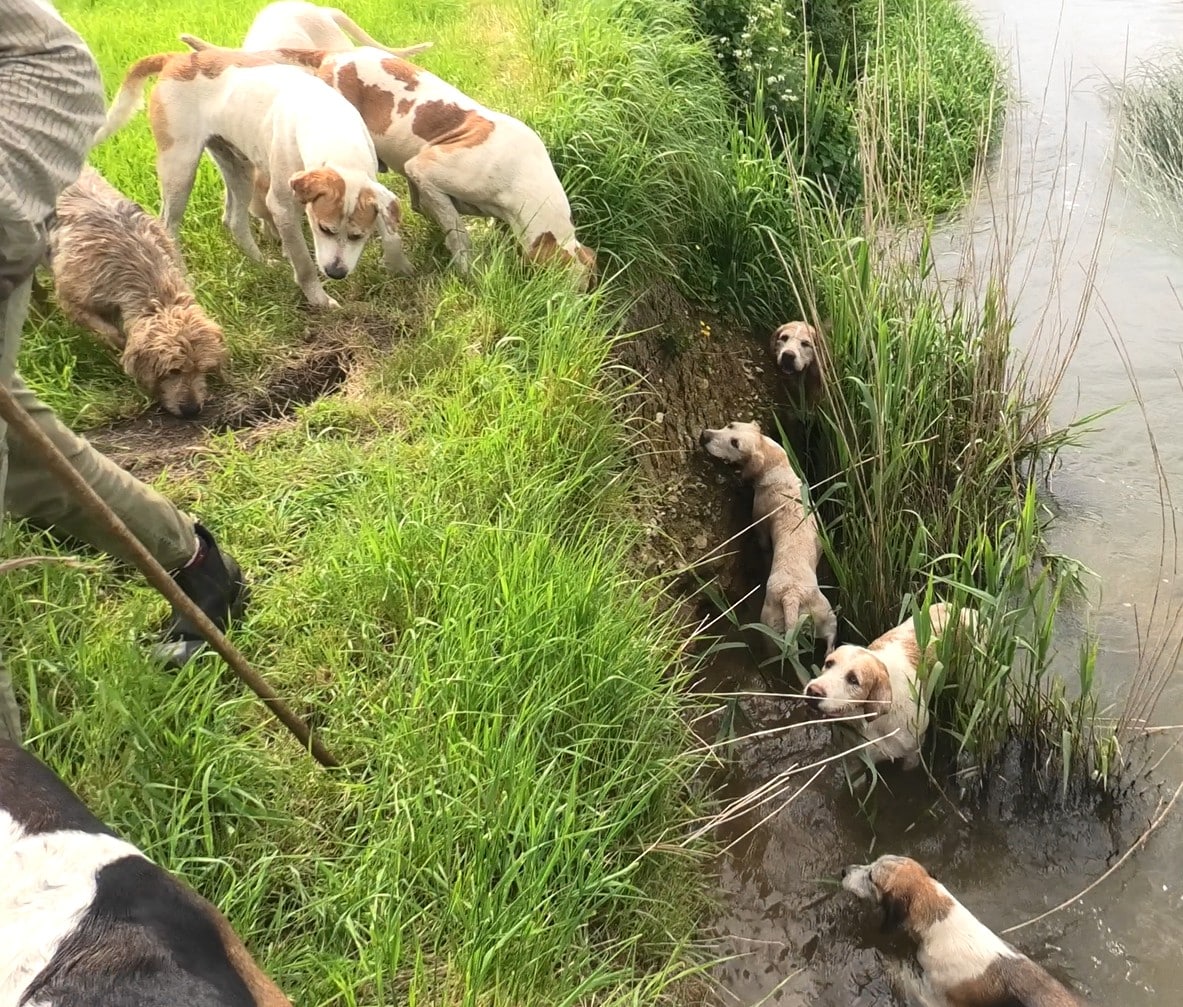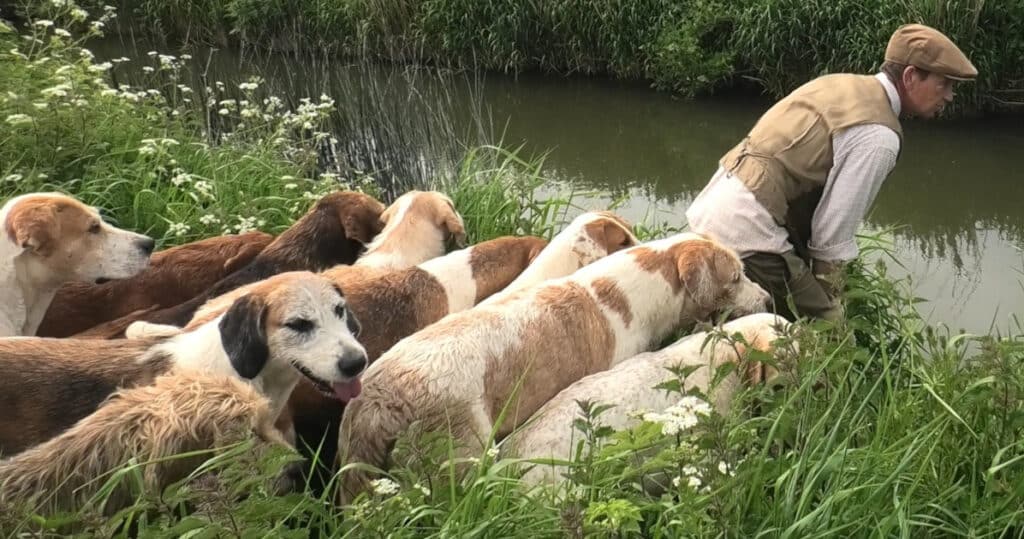Summer is the season for mink hunting in England and Wales. Less well-known than fox hunting, the illegal bloodsport is often used as a guise for hunting Otters. There are nine minkhound packs left in the UK, and saboteurs are on the ground to stop them in their tracks.
Mother mink give birth to their young in April and May. As the hunting season coincides with this, kits (young mink) will starve if their mother is killed. Otter cubs, meanwhile, can be born throughout the year, although most are born now, between May and August.
Mink hunting became a ‘sport’ when otters became a protected species in England and Wales in 1978, and therefore hunting them was made illegal. When the Hunting Act came into force in 2005, mink hunting with hounds also became illegal.
On a typical mink hunting day, the hounds hunt the banks of rivers and streams for the scent of mink or otters, while hunt staff and followers pursue on foot. If a mink or otter is flushed out, the pack will chase the animal along the banks or in the water.
Protect the Wild has previously described the process of mink hunting in detail, explaining:
“If the mink goes to ground in a hole or amongst roots then terriers will be deployed to flush the mammal out. If the mink takes refuge up a tree then the hunt and its followers will try to knock the mink from the tree using poles or even by throwing objects.”
Meanwhile, North West Hunt Sabs has described the process as resembling:
“a glorified rat hunt, the whole hunt going up and down river in a small area chasing the mink from one refuge to another, digging it out of river-bank holes with shovels and terriers and shaking it out of tree branches.”
An otter is a prize kill for minkhound packs. Weymouth Animal Rights previously pointed out:
“whilst the hunt goes out on the pretence of hunting mink; tearing apart a few otters is always the cherry on their cake.”

Environmental vandalism and aggression
It will come as little surprise that in traipsing the riverbanks for their kills, thrashing trees with poles and digging out holes, minkhound packs cause a lot of damage to very sensitive habitats. A number of packs have been caught causing chaos this season already. On 25 May North Dorset Hunt Sabs were on the tail of the Courtenay Tracy Minkhounds in Dorset, and reported the disturbing of nesting moorhens and swans with cygnets.
Meanwhile, the hunts have already been violent towards those trying to stop them. Also on 25 May, the Northern Counties Mink Hunt was sabbed by groups who stopped the pack from making any kills. But, similar to when sabbing fox hunting packs, the sabs had to face the usual aggression. East Yorkshire Coast Hunt Sabs reported:
“We eventually sent them on their way, with one moron trying to mow down Sabs as he left. The same sobbing animal abuser then rammed our vehicle twice whilst dangerously driving down the wrong side of the road.“

Mink numbers are decreasing
Minks (technically American Minks Neovison vison) are not native to the UK. Originally from North America they were brought to the UK to be brutally exploited in commercial fur farms in the 1920s. They are thought to have first bred in the wild here in 1956, after escaping or being deliberately released during the 1950s. As an invasive, non-native species they have little formal protection here but are covered by the Hunting Act 2004.
American minks have undoubtedly had a severe, detrimental impact on native Water Voles. The voles (well-loved as ‘Ratty’ in the children’s classic The Wind in the Willows) are easy prey for minks and became a key part of their diet. Globally locally common, Water Voles are now under the threat of extinction across the UK. In 2020 the Mammal Society published its latest ‘Red List’ assessment of the conservation status of the UK’s mammals saying that Water Voles were Endangered in England, Near Threatened in Scotland, and Critically Endangered in Wales. Unlike mink, Water Voles are fully protected under section 9 of the Wildlife and Countryside Act 1981 (as amended). Schedule 5 of this Act makes it an offence to intentionally damage or obstruct access to Water Vole burrows.
Does that mean that hunting minks has a conservation benefit? Not At all. As Protect the Wild has already pointed out:
“While it’s clear that minks have impacted Water Vole, it’s also true to say that during the same period there has been massive wetland habitat loss, degradation and fragmentation due to damaging riparian management (for example ‘hard’ river engineering techniques), and over-grazing by livestock.”
Mink hunters might want you to believe that they need to target minks in the name of ‘conservation’. But, of course, in trashing sensitive habitats with a pack of hounds trained to kill, they also put water voles at severe risk.
Improve our rivers
In 2018, the Mammal Society stated that mink numbers in Britain may have decreased by a massive 45% within 20 years. A study found that the decline in mink correlates with an increase in the otter population. The Oxford University Wildlife Conservation Research Unit stated back in 2004 that returning otters have driven mink out of rivers because otters are the dominant competitor of the two.
Otters require clean rivers with an abundant supply of food. They need plenty of bank-side vegetation offering secluded sites for their holts. Riversides often lack the appropriate cover for otters to lie up during the day, but such areas can be made more attractive to otters by establishing “otter havens,” where river banks are planted-up and kept free from human disturbance. Marshes -which can be created almost anywhere by the activity of beavers – may also be a very important habitat for raising young and as a source of frogs.
In the last decade the serious neglect of the UK’s rivers and streams has been highlighted in article after article. From tons of raw sewage being deliberately spilled into the country’s waterways, to serious chemical pollution from PFA’s (so-called ‘forever chemicals’ that can take a thousand years to break down), our rivers have been abandoned by the current government. The Rivers Trust says in its 2024 Report ‘State of our Rivers’ that “No single stretch of river in England or Northern Ireland is in good overall health“.
-
Hunting with dogs will never be about ‘conservation’. It is about gratifying the urge to kill. If we are serious about protecting Water Voles, the answer certainly doesn’t lie in gangs of thugs tearing up and down riverbanks destroying sensitive habitats and setting excited dogs on both minks and otters. It is in restoring rivers and otters and recreating and protecting the habitat they both need.
Support monitors and sabs
Many of the same grubby individuals who kill foxes in the autumn and winter are out trying to kill mink and otters in the summer, and Protect the Wild argues that no matter what the species, native or non-native, no sentient mammal should ever have to endure the torturous death of being hunted and then torn apart by hounds. Please support the hunt saboteurs on the ground.
- Support North Dorset Hunt Saboteurs, who work tirelessly, week in, week out, to stop hunts in their tracks. Donate here.
-
East Yorkshire Coast Hunt Saboteurs are desperate to upgrade their dash cams to keep them safe from violent hunt criminals while out sabbing. Donate here.
- Featured images by North Dorset Hunt Saboteurs

